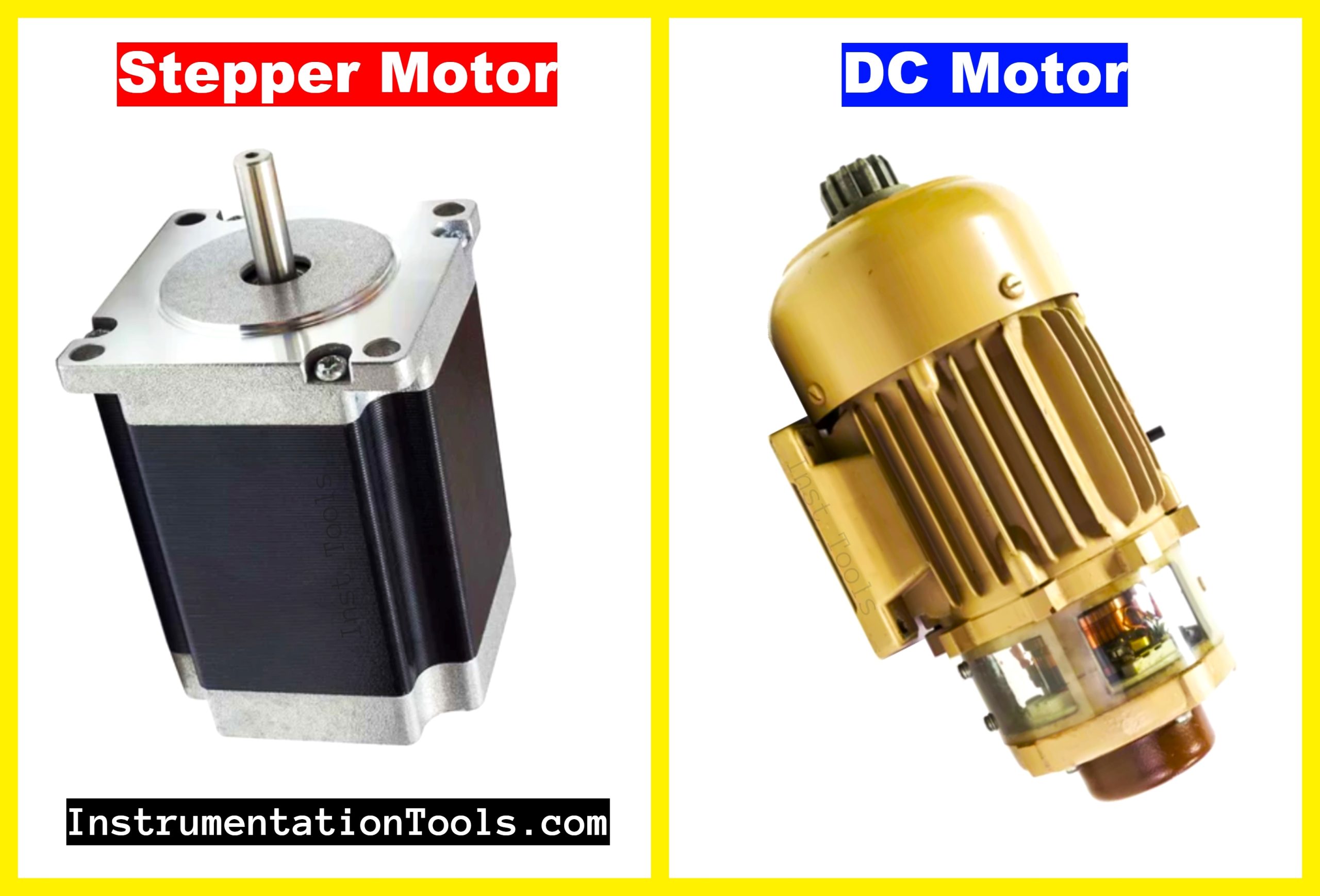In this article, you will learn the difference between stepper motor and DC motor used in the electrical industrial equipment.
The electric motor is one of the most widely used equipment in our day-to-day life. An electric motor converts electrical energy into mechanical movement in the form of rotation by the means of a shaft.
Electrical motors are of various types like DC motors, stepper motors, synchronous motors, induction motors, and servo motors. These various types of electrical motors are differentiated on the basis of their working, the electrical supply required for their functioning, and several other design factors.
Today in this article we will mainly have a discussion on two main types of electrical motors which are widely used. They are the Stepper motor and DC motor.
Stepper Motor
From the name of the stepper motor, it is clear that this motor has something to do with the steps. In the stepper motor, the rotation of the rotor is equally divided into steps and hence this motor is known as a stepper motor.
The stepper motor is a type of brushless DC motor. For producing rotations in steps, the windings of the stepper motor are placed at equal distances from each other on the stator. When the electric supply is given to the motor, these windings will become magnetic poles which will attract the rotor.
Now at a time only one winding is energized or say pulses are given to the stepper motor. The energized winding will attract the rotor towards itself. The control of the electric supply to the winding is through a controller.
This controller energizes these windings one by one and in this way, the stepper motor moves towards these windings which become poles. The controller which energizes the windings controls the whole operation of the stepper motor.
Hence, the rotations which we get out of the stepper motor are very accurate. This is the main reason why the stepper motor is used in the control systems which require accurate outputs.
DC motor
From the name of the DC motor, it is clear that this motor used a DC power supply for its functioning. DC motors are of two types. One is a brushed DC motor and the other is a brushless DC motor.
The most widely used type of DC motor is the brushed DC motor. When the stator of the DC motor receives the electrical power (DC), this stator becomes energized and produces a magnetic field.
This energized stator which becomes the magnet will attract the rotor and the rotor will start moving. The DC motor continuously rotates till the electric power is supplied to the DC motor.
Difference between Stepper Motor and DC Motor

Now let us see some differences between the Stepper motor and the DC motor.
| Stepper Motor | DC Motor |
| The stepper motor produces rotational movement in steps | The DC motor provides continuous rotational motion |
| The movement of the stepper motor is in steps and hence it rotates in degrees | The DC motor rotates in full 360 degrees continuously |
| A Stepper motor is a brushless type of motor | DC motor can be brushed motor and brushless motor also |
| The stepper motor has 3 cables for functioning i.e. power cable, ground cable, and control cable | The DC motor has only 2 cables for functioning i.e. power and ground |
| The RPM of the stepper motor is very low up to 3000 RPM | DC motors have a good range of RPM in thousands depending upon the type of motor |
| The torque of the stepper motor is high compared to that of the DC motor | The DC motors have low torque as compared to the stepper motors |
| The stepper motor produces accurate and precise output | The DC motor rotates continuously hence there is no kind of accuracy that can be defined here |
| The stepper motor is controlled by a controller | The DC motor requires only a switching circuit which can turn it ON and OFF as and when required |
| The stepper motors have a very low efficiency | The efficiency of the DC motor is high compared to that of the stepper motor. |
| The application of the stepper motor are robotics, hard discs drives, printers, manufacturing plants, etc | The applications of the DC motor are lifting tools, toy cars, water pumps, etc |
If you liked this article, then please subscribe to our YouTube Channel for Electrical, Electronics, Instrumentation, PLC, and SCADA video tutorials.
You can also follow us on Facebook and Twitter to receive daily updates.
Read Next:
- Electrical Drawings
- Motor Cooling Methods
- SCADA in Power System
- What is a Buchholz Relay?
- Cables between VFD & Motor